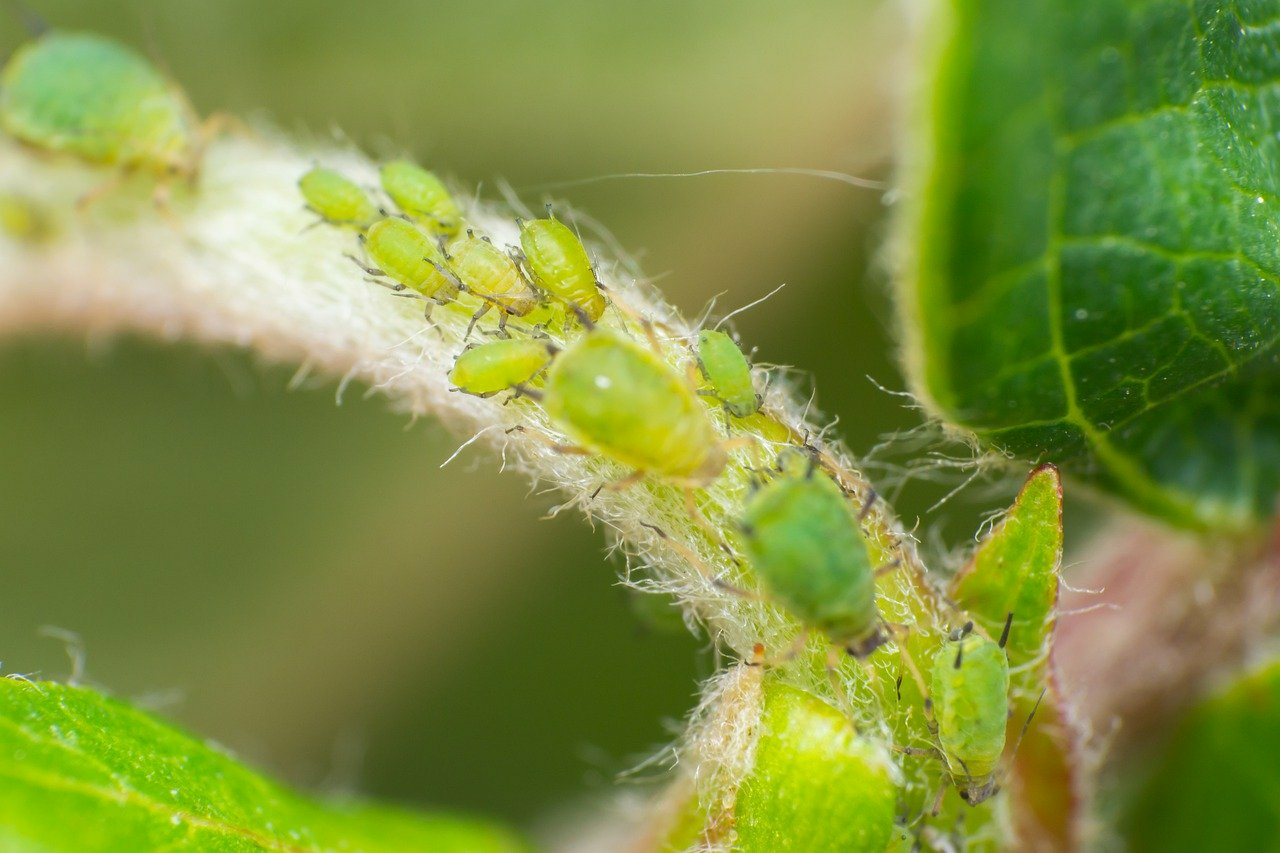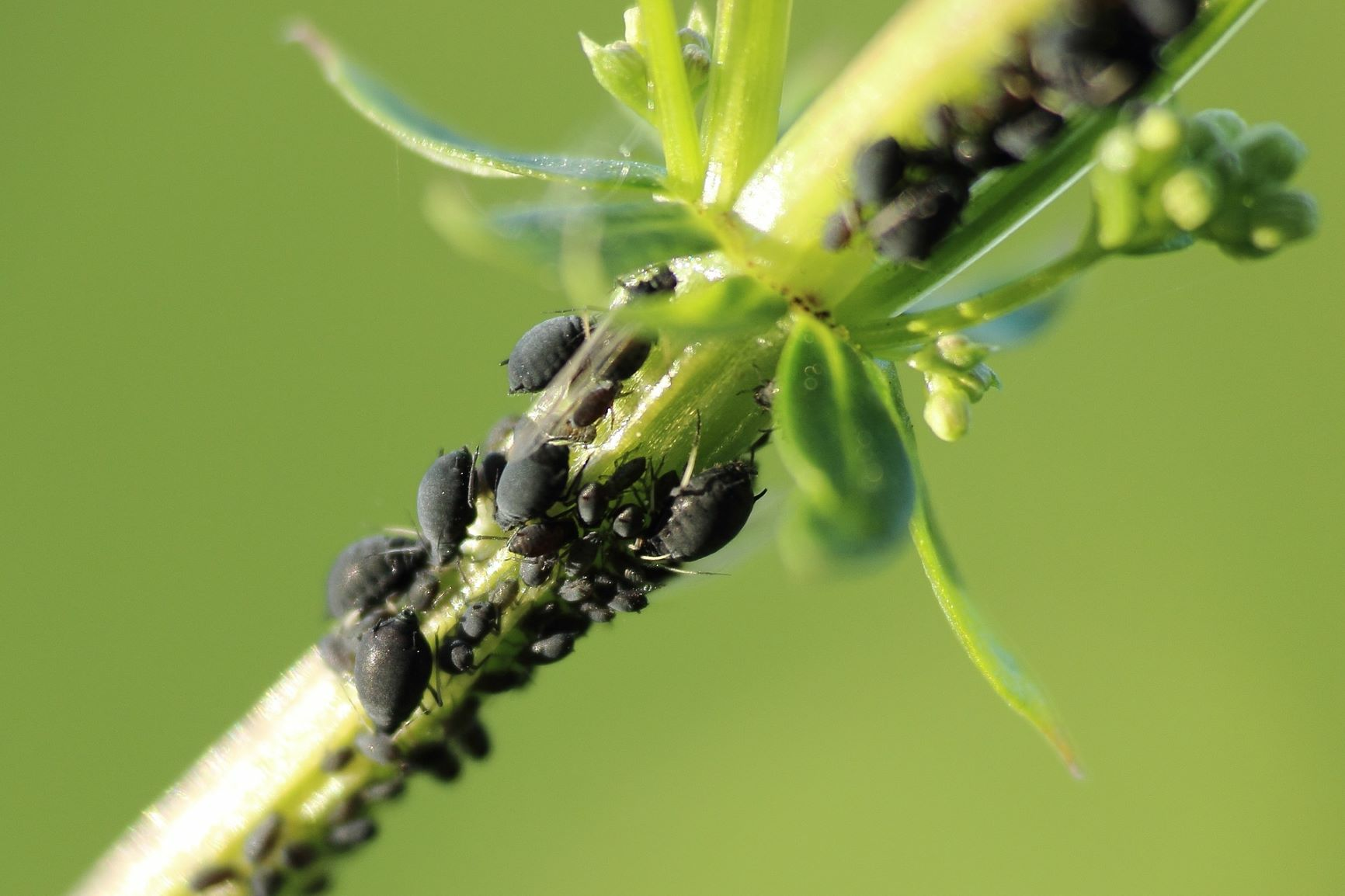Aphids
How to get rid of aphids
The green to black pest can be found all year round and some species even have wings. They often appear in large numbers as they can reproduce very quickly. Aphids bite into plants, extracting nutrients and large amounts of sugar. They excrete most of it, producing a substance called honeydew. The honeydew attracts ants and the black sooty mould. The dark fungus covers the leaves, making photosynthesis less efficient. Once the aphids and their honeydew are gone, so is the fungus. Aphids can also spread viral diseases that are almost impossible to control.
Prevention

- Balanced and appropriate fertilisation. Too much fertiliser causes plants to grow too fast, making the cell walls less stable. This makes it easier for piercing, sucking insects to get to the sap. Too little fertiliser weakens the plant's own defences
- A well-ventilated site adapted to the plant
- Mixed cultivation with repellent herbs. Encourage natural enemies such as ladybirds (create wild areas in the garden with pollen-rich plants such as caraway, coriander, camomile, dill, ...), birds (nesting boxes, hedges, winter food), spiders (bushes, dead wood, piles of stones)
- Loosen the soil from time to time and water sufficiently
- Strengthen plants with nettle manure or algae lime.
Treatment
- Remove heavily infested shoots
- Spray with a strong jet of water (if the plants are stable)
- Sprinkle the plants with rock flour. The insects rub against the fine edges of the flour and bleed to death.
From nettle or rhubarb leaves: 500g - 1kg/1.1 - 2.2 pd of fresh herb in 10 L/21 pt of water, leave for 12 - 24 hours and spray undiluted on infested areas.
Tansy: 300 - 500 g/0.7 - 1.1 pd of fresh herb and flowers in 10 L/21 pt of water, leave to soak for 12 - 24 hours, then spray on stunned parts of the plant. From bracken (worm fern/eagle fern) 1 kg/2.2 pd of fresh plant parts to 10 L/21 pt of water, leave to stand for 12-24 hours, spray undiluted - Neem oil (commercially available).
Other information
Once the pests are born alive, they only need 8 - 14 days to reproduce. This is usually asexual, i.e. without a mate, which allows them to spread rapidly. The 'honeydew' excreted by the aphids attracts ants and bees, among others.
https://pixabay.com/photos/aphids-aphid-pest-bush-macro-789242/

